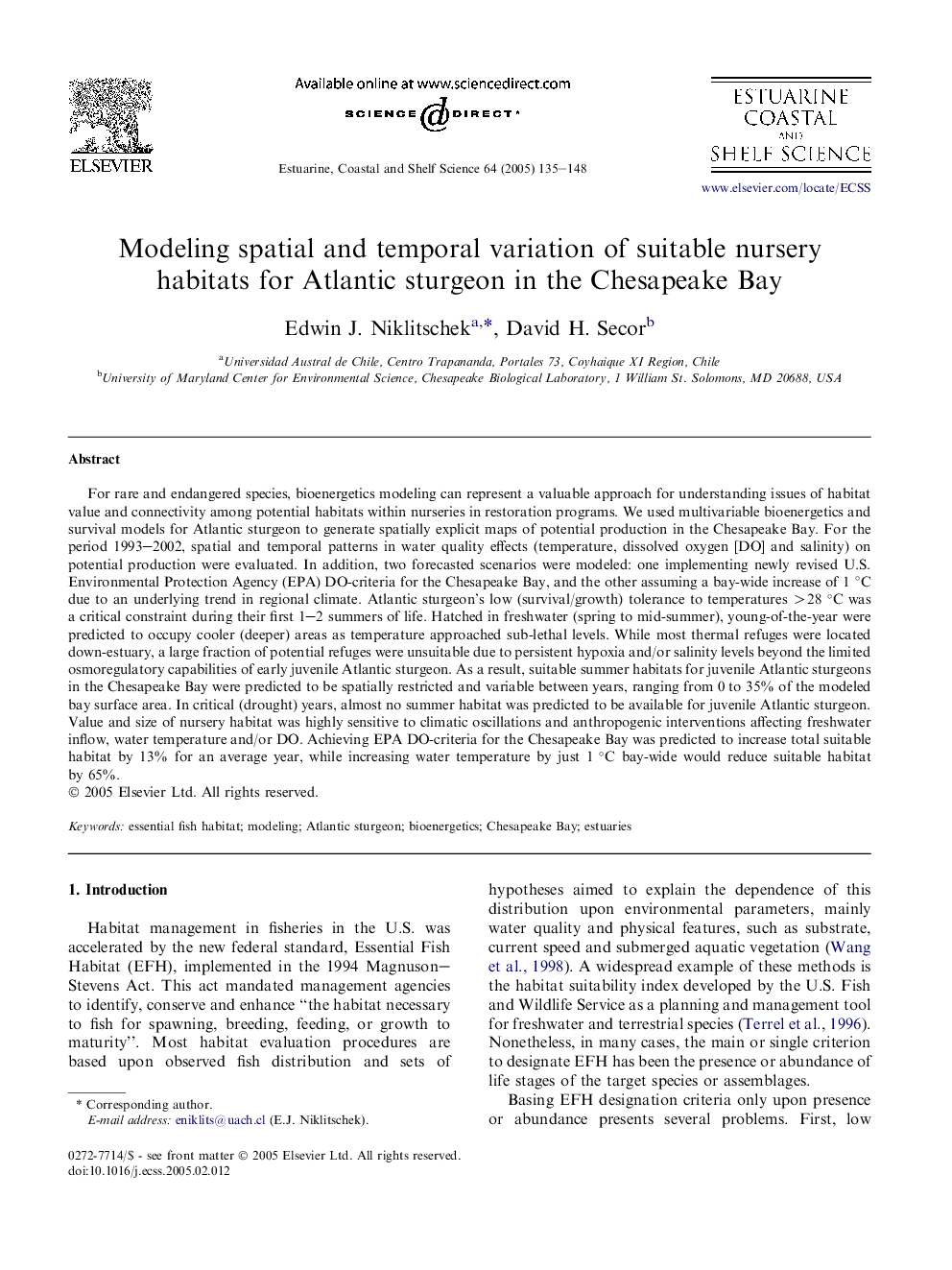| کد مقاله | کد نشریه | سال انتشار | مقاله انگلیسی | نسخه تمام متن |
|---|---|---|---|---|
| 9480841 | 1326781 | 2005 | 14 صفحه PDF | دانلود رایگان |
عنوان انگلیسی مقاله ISI
Modeling spatial and temporal variation of suitable nursery habitats for Atlantic sturgeon in the Chesapeake Bay
دانلود مقاله + سفارش ترجمه
دانلود مقاله ISI انگلیسی
رایگان برای ایرانیان
کلمات کلیدی
موضوعات مرتبط
مهندسی و علوم پایه
علوم زمین و سیارات
زمین شناسی
پیش نمایش صفحه اول مقاله

چکیده انگلیسی
For rare and endangered species, bioenergetics modeling can represent a valuable approach for understanding issues of habitat value and connectivity among potential habitats within nurseries in restoration programs. We used multivariable bioenergetics and survival models for Atlantic sturgeon to generate spatially explicit maps of potential production in the Chesapeake Bay. For the period 1993-2002, spatial and temporal patterns in water quality effects (temperature, dissolved oxygen [DO] and salinity) on potential production were evaluated. In addition, two forecasted scenarios were modeled: one implementing newly revised U.S. Environmental Protection Agency (EPA) DO-criteria for the Chesapeake Bay, and the other assuming a bay-wide increase of 1 °C due to an underlying trend in regional climate. Atlantic sturgeon's low (survival/growth) tolerance to temperatures >28 °C was a critical constraint during their first 1-2 summers of life. Hatched in freshwater (spring to mid-summer), young-of-the-year were predicted to occupy cooler (deeper) areas as temperature approached sub-lethal levels. While most thermal refuges were located down-estuary, a large fraction of potential refuges were unsuitable due to persistent hypoxia and/or salinity levels beyond the limited osmoregulatory capabilities of early juvenile Atlantic sturgeon. As a result, suitable summer habitats for juvenile Atlantic sturgeons in the Chesapeake Bay were predicted to be spatially restricted and variable between years, ranging from 0 to 35% of the modeled bay surface area. In critical (drought) years, almost no summer habitat was predicted to be available for juvenile Atlantic sturgeon. Value and size of nursery habitat was highly sensitive to climatic oscillations and anthropogenic interventions affecting freshwater inflow, water temperature and/or DO. Achieving EPA DO-criteria for the Chesapeake Bay was predicted to increase total suitable habitat by 13% for an average year, while increasing water temperature by just 1 °C bay-wide would reduce suitable habitat by 65%.
ناشر
Database: Elsevier - ScienceDirect (ساینس دایرکت)
Journal: Estuarine, Coastal and Shelf Science - Volume 64, Issue 1, July 2005, Pages 135-148
Journal: Estuarine, Coastal and Shelf Science - Volume 64, Issue 1, July 2005, Pages 135-148
نویسندگان
Edwin J. Niklitschek, David H. Secor,